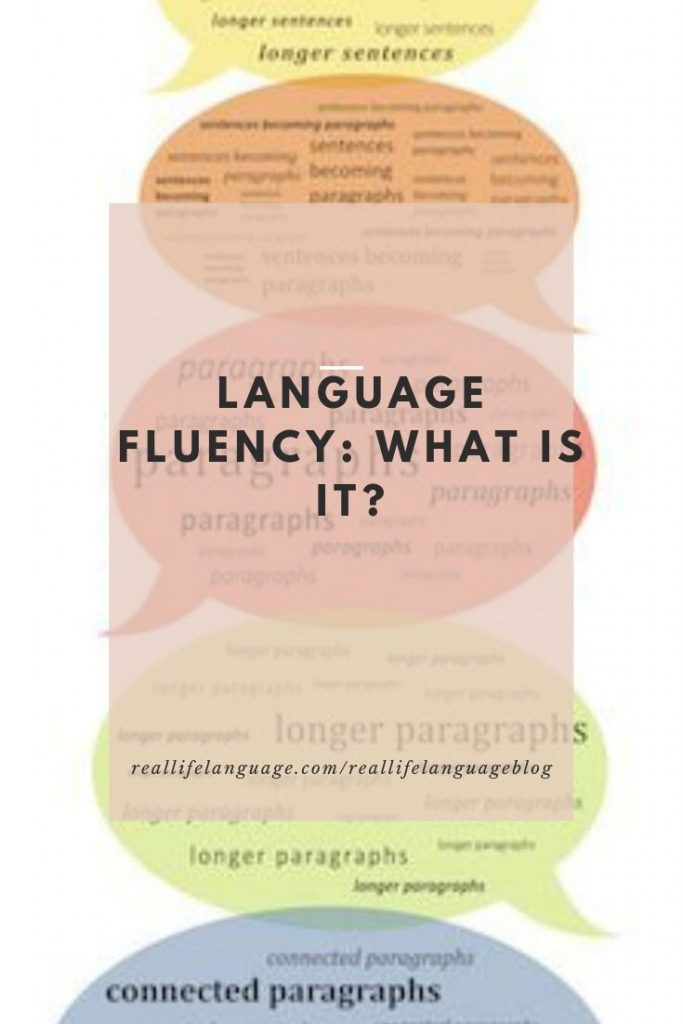
Language Fluency: What is it?
Are you looking for some information on measuring fluency levels in languages? Check out this video:
Prefer to read? See the transcript below:
Hi, and welcome to Measure your Progress and Fluency in Any Language.
In today’s lesson we’re going to talk about, what is fluency? Learner’s Dictionary defines fluency as the ability to speak easily and smoothly. Collin’s Dictionary talks about fluency. To work as a translator you need fluency in at least one foreign language. Let’s look at the adjective form of the word. Someone who is fluent in a particular language, can speak the language easily and correctly. You can also say that someone speaks fluent French, Chinese, or some other language.
So I’m going to ask you to sort of think differently about fluency as far as learning a new language. So if you look here at these speech bubbles, it talks all about becoming fluent in a language, and this could be your own language. Your native language, the one that you learn. We all pass through these different stages of fluency.
And at the very top, that you can’t even see because it’s so tiny, you start with words and sounds, and then those words and sounds start becoming phrases. And then those phrases become longer phrases. Longer phrases with more polish then become sentences, and then those sentences become longer, more expressive sentences. And then when you start talking two and three sentences in one go, they start looking like paragraphs, and then they become paragraphs maybe three to five sentences long. As you develop more language and more ideas that you can express in that language, they become longer paragraphs. And then when you become really expert and specialized on a topic that you know a lot about, you can speak in connected paragraphs. And then you get into extended speech. Think about sort of college professors, that Ted talks, that type of speech.
We all pass through all of these stages in a language, and it doesn’t matter again, whether it’s your native language or a second language, a third language, a fourth language. We all go through those phases of fluency. But I think it’s really important to understand that fluency, they’re different… it’s just a continuum. You can still be a speaker of a language if you’re speaking words, right up at the very top of that bubble, or if you’re speaking in extended speech, right? Those are just different levels of ability.
And I think it’s really important to see that as a learner, that you don’t have to get to some magic point to be a speaker of that language, right? And I think it’s important also to understand these different phases. It’s not a black or white point, just you need to understand as your skills grow, you can get better, and better, and better, and better, and better.
There is one point on that continuum that I want to talk about, and that’s that paragraph level. And that’s the point where a lot of people consider themselves, or are considered to be fluent in a language. And I want to give you some concrete examples, and we’ll go into more depth in another lesson. So if what I’m saying doesn’t make a whole lot of sense to you, it certainly will in the next lesson. This paragraph level, this is the common European framework for reference, B2 level.
If you follow Benny Louis, Fluent in Three Months, that’s this level. If you studied a foreign language in high school, and you took any of the advanced placement exams, this is the benchmark. If you are familiar with the ACTFL, the American Council For The Teaching of Foreign Languages scale, that’s this intermediate high advanced low level. If you understand beginning teacher testing for foreign languages, which a lot of states give, this is the same level, the test that ETS often make, different states.
So if there’s one black and white point that you want to kind of think about, fluent or not, this is the point. Remember, you’re a speaker of languages at different levels of fluency, all the way throughout the continuum, but this is sort of that magic point, if you want to pick one point to be that magic point.
In our next lesson we’re going to talk all about tools and scales to measure fluency. So specific, concrete ways that you can figure out where you are on that continuum. Official tests, tests from different countries, different parts of the world, some tests that you can get official results, tests that you can do sort of self-assessment to help keeping your skills moving forward. So I look forward to seeing you in the next lesson, where we’ll talk about specific tools and scales to measure fluency that work in any language.
A la prochaine. Hasta la próxima. Adiós.
Looking to assess your own fluency? Get the free guide here: http://reallifelanguage.com/reallifelanguageblog/2017/01/14/self-assessment-workbook/